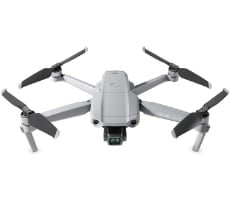Asus Eee Pad Transformer Prime, Tegra 3 Unleashed
It sometimes rolls this way. One of the most hotly anticipated product launches of the year and, you guessed it, the prized package drops on your doorstep for testing and evaluation literally hours before the official launch hits. Have we had nearly enough time with this sleek little minx? Absolutely not. But when the Asus Eee Pad Transformer Prime shows up packing NVIDIA's new Tegra 3 Quad-Core SoC with its perky fifth companion core in tow, you man-up (or woman-up as the case may be), get your geek on and burn some midnight oil.
At least dessert wasn't on the menu. No Ice Cream Sandwiches here just yet, thank God. Android 4.0 on top, with this kind of turn-around, would have been an aneurism in the making, but hey, life is short. Live fast, die young, stay pretty. Nah, I'll pass on that, thanks. Honeycomb 3.2 will do just fine for now and Asus is one of the best in the biz with OTA updates, so we'll take that in stride later.
So, what do we have for you on the pages ahead? This is a PREVIEW of the Asus Eee Pad Transformer Prime tablet with NVIDIA's Tegra 3 Quad Core low power SoC. We've got a lot of ground to cover and time is short; so we'll cut the chatter. But you've been warned. There's a whole lot of sexy going on here itching to break all the rules (in the test lab) and show you what its got.
First, a quick video preview demo of the machine in action...
How does that look for tablet gaming? Not too shabby at all we'd say. A couple of years ago, NVIDIA boasted about a time when gaming visuals on a tablet would rival console graphics. We'd say the time has finally come but dig in, there's much more to see.
Asus Eee Pad Transformer Prime
|
| Operating System | Android 3.2 |
| Display | 10.1" LED Backlight WXGA (1280x800) Screen Super IPS+ 10 finger multi-touch support Corning Gorilla Glass |
| CPU | NVIDIA Tegra 3 Quad-core CPU - 1.3 - 1.4GHz |
| Memory | 1GB |
| Storage | 32GB / 64GB EMMC + 8G life time ASUS Webstorage space |
| Wireless Data Network | WLAN 802.11 b/g/n@2.4GHz Bluetooth V2.1+EDR |
| Camera | 1.2 MP Front Camera 8 MP Rear Camera Auto focus (rear) with flash Large F2.4 aperture. (rear camera) |
| Audio | Stereo Speakers High Quality Mic |
| Interface | Pad: 1 x 2-in-1 Audio Jack (Headphone / Mic-in) 1 x micro HDMI 1 x Micro SD Card Reader Mobile Dock: 1 x USB2.0 port 1 x SD Card Reader |
| Sensor | G-Sensor, Light Sensor, Gyroscope, E-compass, GPS |
| Applications | ASUS launcher, MyLibrary, MyNet, MyCloud, @Vibe Music, asus webstorage, File manager, ASUS sync, SuperNote, App Locker, App Backup, TegraZone |
| Battery | 12 hours; 25Wh Li-polymer Battery 18 hours pad with dock; 25Wh(pad) + 22Wh(dock) Li-polymer Battery |
| Dimensions | 263 x 180.8 x 8.3 mm - 10.35in x 7.12in x 0.33in |
| Weight | 586 grams (1.29lbs) |
| Mobile Dock | Dock only: Dimensions: 263 x 180.8 x 8~10.4mm Weight: 537 grams (1.18lbs) Pad with dock: Dimensions: 263 x 180.8 x 17~19.4mm Weight: 1123 grams (2.47lbs) |
| MSRP: | 32GB - $499, 64GB - $599, Optional Keyboard Dock - $149.99 |
Those of you looking directly at the thinness spec here will notice that Asus nailed it. At .33 inches, it's just a hair thinner than the iPad 2 and weighs slightly less too, but the "less is more" approach stops right there. The panel on the Prime is a Super IPS+ display that Asus specs at 380 nits of brightness in standard mode and 600 nits in Super IPS+ mode. Super IPS+ comes in handy especially in daylight viewing environments. Our test machine is a 32GB of storage variant, but there is a 64GB model as well. Of course, this if the first tablet to hit the market with NVIDIA's quasi-Quad-Core 1.3GHz Tegra 3 SoC under the hood. We say "quasi" because it actually has a fifth "companion core" on board, but more on that later.
Along with all of this bleeding-edge goodness you get an upgraded 8MP rear camera with auto-focus and flash, as well as a front-facing 1.2MP webcam. In terms of battery life, Asus claims 12 hours can be had on the tablet itself and another 6 is in the tank of the keyboard dock, for a total of 18 hours possible available uptime. We're still working on battery life testing, so we'll have to reserve some further qualification on those claims, but in the mean time, let's get a closer look a the skins.







